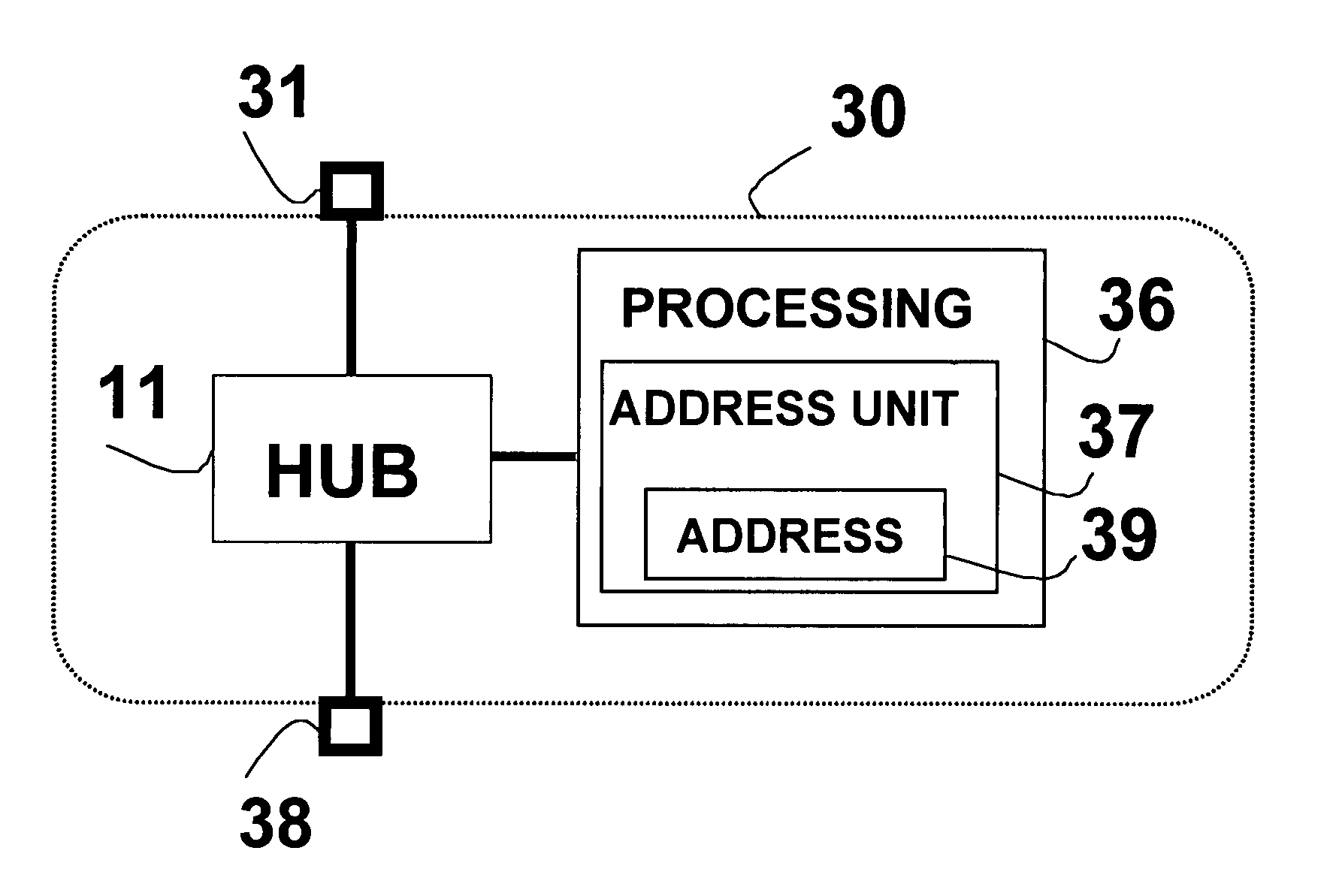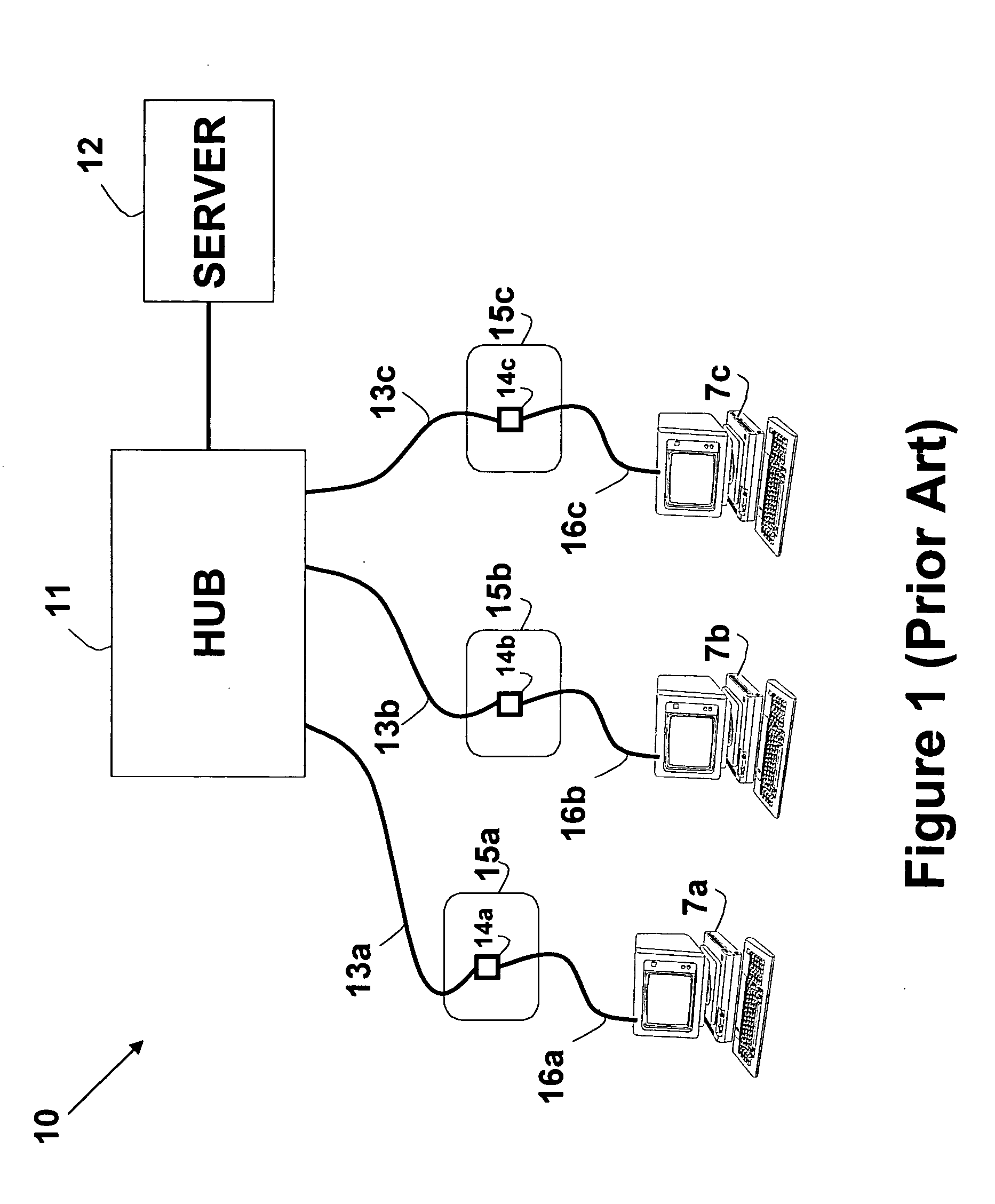Addressable outlet, and a network using same
a technology applied in the field of addressable outlets and network connections, can solve the problems of complex procedures, labor-intensive, time-consuming, and expensive, and achieve the effect of simple testing of the continuity of wiring from the hub to the outlet, and avoiding the installation of new wiring infrastructure in existing buildings
- Summary
- Abstract
- Description
- Claims
- Application Information
AI Technical Summary
Benefits of technology
Problems solved by technology
Method used
Image
Examples
Embodiment Construction
[0049] The principles and operation of a network according to the present invention may be understood with reference to the drawings and the accompanying description. The drawings and descriptions are conceptual only. In actual practice, a single component can implement one or more functions; alternatively, each function can be implemented by a plurality of components and circuits. In the drawings and descriptions, identical reference numerals indicate those components that are common to different embodiments or configurations.
[0050]FIG. 3 schematically shows an outlet 30 according to a first embodiment of the invention. As shown in FIG. 3, outlet 30 includes a three-port hub 11. One port goes to a connector 31, which connects the outlet 30 to network wiring as previously described, and as is known in the art (such as to wiring 13a in FIG. 1). Another hub port goes to a connector 38, enabling connection of a data unit as described previously and as is known in the art (such as to d...
PUM
 Login to View More
Login to View More Abstract
Description
Claims
Application Information
 Login to View More
Login to View More - R&D
- Intellectual Property
- Life Sciences
- Materials
- Tech Scout
- Unparalleled Data Quality
- Higher Quality Content
- 60% Fewer Hallucinations
Browse by: Latest US Patents, China's latest patents, Technical Efficacy Thesaurus, Application Domain, Technology Topic, Popular Technical Reports.
© 2025 PatSnap. All rights reserved.Legal|Privacy policy|Modern Slavery Act Transparency Statement|Sitemap|About US| Contact US: help@patsnap.com



